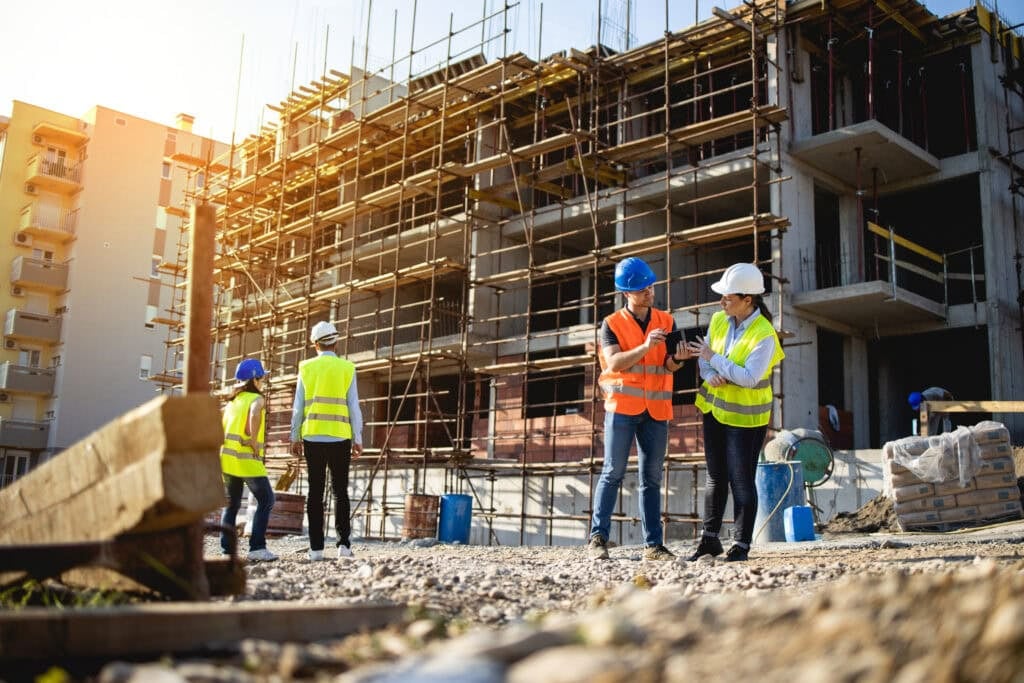Construction Industry Faces Mixed Signals in 2025: Strategic Insights for Industry Leaders
Published on by Erik Wurtenberger in Construction

The U.S. construction industry is navigating a complex economic landscape in 2025. After achieving 6% growth in 2024, the sector is projected to contract by 1% this year. However, this modest decline masks significant divergence across market segments, creating both challenges and opportunities for construction companies willing to adapt their strategies.
Residential markets under pressure
Interest rate pressures continue to weigh heavily on residential construction. Single-family spending is declining 3% to $426 billion, while multifamily construction faces a sharper 9% decrease. With mortgage rates holding between 6% and 6.5%, payment-to-income ratios remain near historic highs, severely constraining affordability.
The sector isn’t entirely without bright spots. Residential improvements are growing 1%, driven by aging housing stock and energy efficiency incentives. This trend reflects a fundamental shift: when homeowners can’t trade up, they invest in what they have. For contractors, this represents a stable revenue stream less sensitive to broader economic volatility.
Commercial sector shows structural shifts
The commercial construction landscape reveals the broader economic transformation underway. While office construction shows modest 1% growth, this aggregate figure conceals a dramatic bifurcation. Traditional office space grapples with nearly 20% vacancy rates, yet data center investment surges 32% year-over-year to $38 billion.
Commercial construction overall contracts 9% amid record store closures and warehouse oversupply. Manufacturing construction, after years of robust expansion, retreats 4% as megaprojects transition from planning to execution phases and tariff pressures increase input costs.
Infrastructure provides market stability
Infrastructure investment continues to anchor the construction sector. Power spending maintains $156 billion levels, supported by transmission projects and nuclear developments that offset renewable energy delays. Highway spending holds steady at $145 billion, bolstered by strong project backlogs.
Water and wastewater utilities lead growth at 7% and 12% respectively, driven by replacement programs and climate resilience initiatives. These segments demonstrate the durability of essential infrastructure spending, which remains largely insulated from consumer demand cycles and interest rate fluctuations.
Strategic implications for construction leaders
Current market conditions reward strategic selectivity over volume-based approaches. Companies achieving sustainable growth are concentrating resources in sectors with predictable cash flows and regulatory support. The data suggests focusing on infrastructure, specialized facilities like data centers, and essential services rather than pursuing speculative development.
Successful firms are also preparing for extended project timelines, strengthening supply chain partnerships, and building capacity for the recovery cycle projected to begin in late 2026. This preparation phase is critical, as construction typically lags broader economic recovery.
Managing through market transition
The current environment represents a market transition rather than a traditional downturn. Companies that recognize this distinction and adjust their strategies accordingly will be positioned to capitalize on emerging opportunities. Key considerations include diversifying across resilient sectors, maintaining strong balance sheets, and investing in capabilities that align with long-term infrastructure needs.
The construction industry requires specialized financial guidance to navigate these market dynamics effectively. Barnes Dennig’s construction industry experts help companies optimize cash flow management, evaluate market opportunities, and develop strategic plans for sustainable growth.
As always, we’re here to support your business through this transitional period and help position your company for future success. Contact us today to schedule a free consultation and discuss your specific needs and challenges.